
Moravian 47 is an Indian reserve located in Chatham-Kent, Ontario, with an area of 13 square kilometres (5.0 sq mi). It is occupied by the Delaware Nation at Moraviantown First Nation, a part of the Christian Munsee branch of the Lenape, and is commonly known as Moravian of the Thames reserve. The resident registered population is 457, with another 587 band members living off the reserve.

Codrington College is an Anglican theological college in St. John, Barbados now affiliated with the University of the West Indies at Cave Hill. It is one of the oldest Anglican theological colleges in the Americas. It was affiliated to the University of Durham from 1875 to 1965.

The Moravian Church, or the Moravian Brethren, formally the Unitas Fratrum, is one of the oldest Protestant denominations in Christianity, dating back to the Bohemian Reformation of the 15th century and the Unity of the Brethren founded in the Kingdom of Bohemia, sixty years before Luther's Reformation.

The landlocked parish of Saint Thomas is found in the centre of Barbados. It is one of only two landlocked parishes in the island, the other being Saint George to the south.

The Christian Munsee are a group of Lenape, an Indigenous people in the United States, that primarily speak Munsee and have converted to Christianity, following the teachings of Moravian missionaries. The Christian Munsee are also known as the Moravian Munsee or the Moravian Indians, the Moravian Christian Indians or, in context, simply the Christian Indians. As the Moravian Church transferred some of their missions to other Christian denominations, such as the Methodists, Christian Munsee today belong to the Moravian Church, Methodist Church, United Church of Canada, among other Christian denominations.
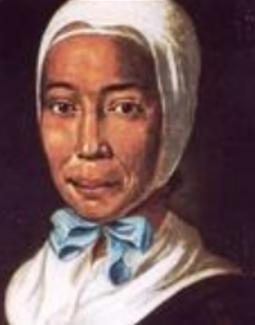
Rebecca Freundlich Protten, also Shelly (1718–1780) was a Caribbean Moravian evangelist and pioneer missionary who propagated the Gospel to slaves on the island of Saint Thomas, US Virgin Islands. A "mulatress" and a former slave in Antigua, Antigua and Barbuda, she pioneered Christian missions in the Atlantic World in the 1700s. Scholars have described her as the "Mother of Modern Missions" as her life's work bridged Christianity in the West Indies, in Europe and in West Africa, all geographic regions she lived in.
Jens Haven was a Danish-Canadian Moravian missionary and the prime mover behind the founding of the Moravian missions in Labrador.

United Society Partners in the Gospel (USPG) is a United Kingdom-based charitable organization.
The Jamaica Province of the Moravian Church is part of the worldwide Moravian Church Unity.

Protestantism is the dominant religion in Jamaica. Protestants make up about 65% percent of the population. The five largest denominations in Jamaica are: Church of God, Seventh-day Adventist, Baptist, Pentecostal and Anglican. The full list is below. Most of the Caribbean is Catholic; Jamaica's Protestantism is a legacy of missionaries that came to the island in the 18th and 19th centuries. Missionaries attempted to convert slaves to varying Protestant denominations of Moravians, Baptists, Methodists, and Presbyterians to name a few. As missionaries worked to convert slaves, African traditions mixed with the religion brought over by Europeans. Protestantism was associated with black nationalism in Jamaica, aiming to improve the lives of blacks who were governed by a white minority during colonial times. Today, Protestantism plays an important role in society by providing services to people in need.
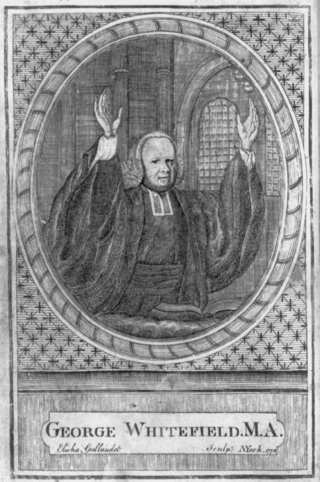
Christianity in the 18th century is marked by the First Great Awakening in the Americas, along with the expansion of the Spanish and Portuguese empires around the world, which helped to spread Catholicism.

Old Nuuk may refer to several neighborhoods of Nuuk, the capital of Greenland.

The Barbados Museum & Historical Society is a private organization but membership is open to both members and non-members who are interested in the numerous collections. Established in 1933 in the old Military Prison at the Saint Ann's historic Garrison, the museum has more than 500,000 artifacts that depict the island's rich history and natural history. Inclusive of some of these artifacts are antique maps of the island and paintings.

Johann Leonhard Dober was, along with David Nitschmann, one of the two first missionaries of the Moravian Brethren in the West Indies in 1732.
The Moravian Slaves, a popular narrative about Christian Missions concerning Johann Leonhard Dober and David Nitschmann, describes how these two young Moravian Brethren from Herrnhut, Germany, were called in 1732 to minister to the African slaves on the islands of St. Thomas and St. Croix in the Danish West Indies. Allegedly, when they were told that they would not be allowed to do such a thing, Dober and Nitschmann sold themselves to a slave owner and boarded a ship bound for the West Indies. As the ship pulled away from the docks, it is said that they called out to their loved ones on shore, "May the Lamb that was slain receive the reward of His suffering!"

New Herrnhut Moravian Church is a historic Moravian church in Saint Thomas, U.S. Virgin Islands. The Moravians, a Protestant religious group based in the town of Herrnhut in Saxony, began missionary work in 1732 in St. Thomas and were the first Protestants to begin missionary work among slaves and free Blacks in the Danish West Indies. Missionary work on St. Thomas was initially opposed by planters who didn't want slaves to receive education or religious instruction.
The Moravian Historical Society in Nazareth, Pennsylvania, was founded in 1857. Its mission is to preserve, interpret, and celebrate the rich culture of the Moravians. It is the third oldest historical society in the Commonwealth of Pennsylvania. The Moravian Historical Society is housed in the 1740-1743 Whitefield House on the Ephrata Tract in downtown Nazareth. The Moravian Historical Society is affiliated with the Moravian Archives in Bethlehem, Pennsylvania, the repository for records of the Moravian Church in North America, Northern Province.
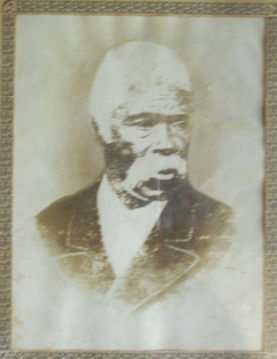
Alexander Worthy Clerk was a Jamaican Moravian pioneer missionary, teacher and clergyman who arrived in 1843 in the Danish Protectorate of Christiansborg, now Osu in Accra, Ghana, then known as the Gold Coast. He was part of the first group of 24 West Indian missionaries from Jamaica and Antigua who worked under the aegis of the Basel Evangelical Missionary Society of Switzerland. Caribbean missionary activity in Africa fit into the broader "Atlantic Missionary Movement" of the diaspora between the 1780s and the 1920s. Shortly after his arrival in Ghana, the mission appointed Clerk as the first Deacon of the Christ Presbyterian Church, Akropong, founded by the first Basel missionary survivor on the Gold Coast, Andreas Riis in 1835, as the organisation's first Protestant church in the country. Alexander Clerk is widely acknowledged and regarded as one of the pioneers of the precursor to the Presbyterian Church of Ghana. As a leader in education in colonial Ghana, he designed curriculum and pedagogy, co-establishing with fellow educators, George Peter Thompson and Catherine Mulgrave, an all-male boarding middle school, the Salem School at Osu in 1843. In 1848, Clerk was an inaugural faculty member at the Basel Mission Seminary, Akropong, now known as the Presbyterian College of Education, where he was an instructor in Biblical studies. The Basel missionaries founded the Akropong seminary and normal school to train teacher-catechists in service of the mission. The college is the second oldest higher educational institution in early modern West Africa after Fourah Bay College in Freetown, Sierra Leone which was established in 1827. Clerk was the father of Nicholas Timothy Clerk, a Basel-trained theologian, who was elected the first Synod Clerk of the Presbyterian Church of the Gold Coast from 1918 to 1932 and co-founded the all boys' boarding high school, the Presbyterian Boys' Secondary School established in 1938. A. W. Clerk was also the progenitor of the historically important Clerk family from the suburb of Osu in Accra.
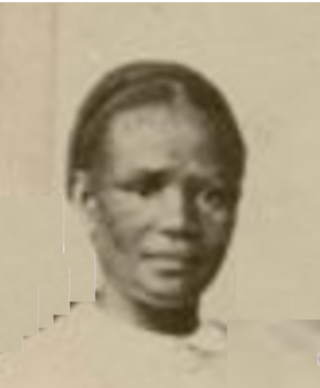
Catherine Elisabeth Mulgrave also Gewe was an Angolan-born Jamaican Moravian pioneer educator, administrator and missionary who accompanied a group of 24 Caribbean mission recruits from Jamaica and Antigua and arrived in the Danish Protectorate of Christiansborg, now Osu, Accra in Ghana in 1843. Mulgrave was a leading figure in pedagogy and the education programme for girls in both Jamaica and on the Gold Coast. She was the Basel Mission’s first female teacher active on the Gold Coast. Under the auspices of the society, she played a pioneering role in the Christian women's ministry of the Protestant movement in colonial Ghana. Catherine Mulgrave was also one of the first African woman teachers in the missionary educationalist system in Africa.
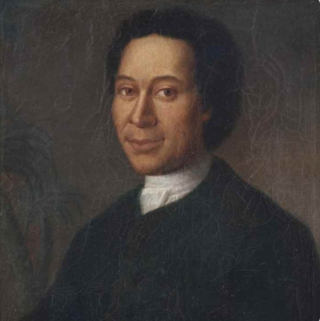
Christian Jacob Protten also Christian Jakobus Africanus Protten or Uldrich was a Euro-African Moravian missionary pioneer, linguist, translator and educationalist-administrator in Christiansborg on the Danish Gold Coast in the eighteenth century. The first recorded grammatical treatise in the Ga and Fante languages was written by Protten and published in Copenhagen in 1764.















